Weidong Zhang
AI Lab, Netease
DIMT25@ICDAR2025: HW-TSC's End-to-End Document Image Machine Translation System Leveraging Large Vision-Language Model
Apr 24, 2025Abstract:This paper presents the technical solution proposed by Huawei Translation Service Center (HW-TSC) for the "End-to-End Document Image Machine Translation for Complex Layouts" competition at the 19th International Conference on Document Analysis and Recognition (DIMT25@ICDAR2025). Leveraging state-of-the-art open-source large vision-language model (LVLM), we introduce a training framework that combines multi-task learning with perceptual chain-of-thought to develop a comprehensive end-to-end document translation system. During the inference phase, we apply minimum Bayesian decoding and post-processing strategies to further enhance the system's translation capabilities. Our solution uniquely addresses both OCR-based and OCR-free document image translation tasks within a unified framework. This paper systematically details the training methods, inference strategies, LVLM base models, training data, experimental setups, and results, demonstrating an effective approach to document image machine translation.
Evaluating Menu OCR and Translation: A Benchmark for Aligning Human and Automated Evaluations in Large Vision-Language Models
Apr 22, 2025Abstract:The rapid advancement of large vision-language models (LVLMs) has significantly propelled applications in document understanding, particularly in optical character recognition (OCR) and multilingual translation. However, current evaluations of LVLMs, like the widely used OCRBench, mainly focus on verifying the correctness of their short-text responses and long-text responses with simple layout, while the evaluation of their ability to understand long texts with complex layout design is highly significant but largely overlooked. In this paper, we propose Menu OCR and Translation Benchmark (MOTBench), a specialized evaluation framework emphasizing the pivotal role of menu translation in cross-cultural communication. MOTBench requires LVLMs to accurately recognize and translate each dish, along with its price and unit items on a menu, providing a comprehensive assessment of their visual understanding and language processing capabilities. Our benchmark is comprised of a collection of Chinese and English menus, characterized by intricate layouts, a variety of fonts, and culturally specific elements across different languages, along with precise human annotations. Experiments show that our automatic evaluation results are highly consistent with professional human evaluation. We evaluate a range of publicly available state-of-the-art LVLMs, and through analyzing their output to identify the strengths and weaknesses in their performance, offering valuable insights to guide future advancements in LVLM development. MOTBench is available at https://github.com/gitwzl/MOTBench.
Investigating Numerical Translation with Large Language Models
Jan 09, 2025


Abstract:The inaccurate translation of numbers can lead to significant security issues, ranging from financial setbacks to medical inaccuracies. While large language models (LLMs) have made significant advancements in machine translation, their capacity for translating numbers has not been thoroughly explored. This study focuses on evaluating the reliability of LLM-based machine translation systems when handling numerical data. In order to systematically test the numerical translation capabilities of currently open source LLMs, we have constructed a numerical translation dataset between Chinese and English based on real business data, encompassing ten types of numerical translation. Experiments on the dataset indicate that errors in numerical translation are a common issue, with most open-source LLMs faltering when faced with our test scenarios. Especially when it comes to numerical types involving large units like ``million", ``billion", and "yi", even the latest llama3.1 8b model can have error rates as high as 20%. Finally, we introduce three potential strategies to mitigate the numerical mistranslations for large units.
LiDAR-based End-to-end Temporal Perception for Vehicle-Infrastructure Cooperation
Nov 22, 2024Abstract:Temporal perception, the ability to detect and track objects over time, is critical in autonomous driving for maintaining a comprehensive understanding of dynamic environments. However, this task is hindered by significant challenges, including incomplete perception caused by occluded objects and observational blind spots, which are common in single-vehicle perception systems. To address these issues, we introduce LET-VIC, a LiDAR-based End-to-End Tracking framework for Vehicle-Infrastructure Cooperation (VIC). LET-VIC leverages Vehicle-to-Everything (V2X) communication to enhance temporal perception by fusing spatial and temporal data from both vehicle and infrastructure sensors. First, it spatially integrates Bird's Eye View (BEV) features from vehicle-side and infrastructure-side LiDAR data, creating a comprehensive view that mitigates occlusions and compensates for blind spots. Second, LET-VIC incorporates temporal context across frames, allowing the model to leverage historical data for enhanced tracking stability and accuracy. To further improve robustness, LET-VIC includes a Calibration Error Compensation (CEC) module to address sensor misalignments and ensure precise feature alignment. Experiments on the V2X-Seq-SPD dataset demonstrate that LET-VIC significantly outperforms baseline models, achieving at least a 13.7% improvement in mAP and a 13.1% improvement in AMOTA without considering communication delays. This work offers a practical solution and a new research direction for advancing temporal perception in autonomous driving through vehicle-infrastructure cooperation.
MotionGS : Compact Gaussian Splatting SLAM by Motion Filter
May 18, 2024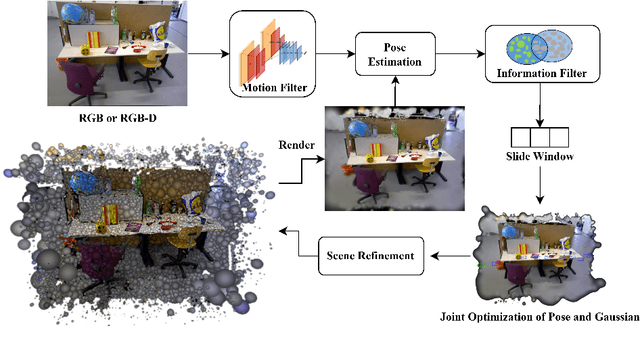
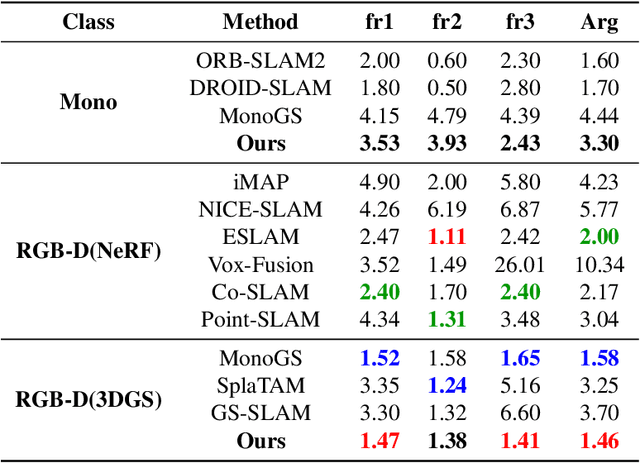
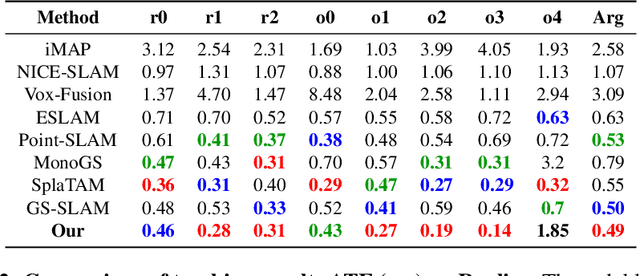
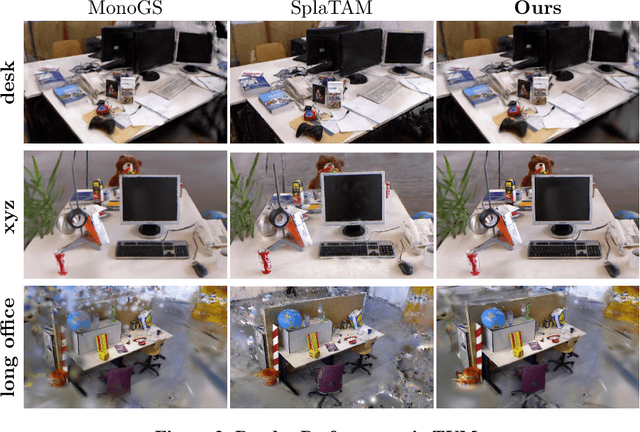
Abstract:With their high-fidelity scene representation capability, the attention of SLAM field is deeply attracted by the Neural Radiation Field (NeRF) and 3D Gaussian Splatting (3DGS). Recently, there has been a Surge in NeRF-based SLAM, while 3DGS-based SLAM is sparse. A novel 3DGS-based SLAM approach with a fusion of deep visual feature, dual keyframe selection and 3DGS is presented in this paper. Compared with the existing methods, the proposed selectively tracking is achieved by feature extraction and motion filter on each frame. The joint optimization of pose and 3D Gaussian runs through the entire mapping process. Additionally, the coarse-to-fine pose estimation and compact Gaussian scene representation are implemented by dual keyfeature selection and novel loss functions. Experimental results demonstrate that the proposed algorithm not only outperforms the existing methods in tracking and mapping, but also has less memory usage.
HELLaMA: LLaMA-based Table to Text Generation by Highlighting the Important Evidence
Nov 15, 2023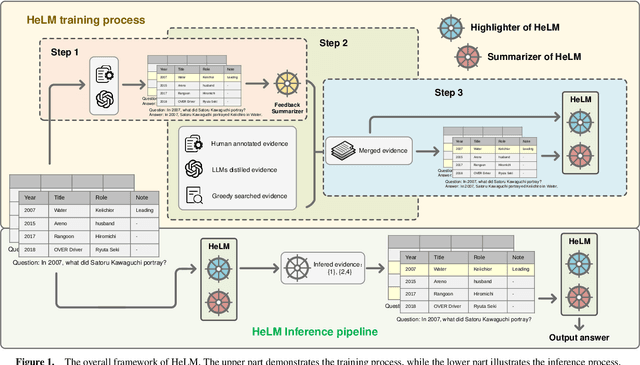
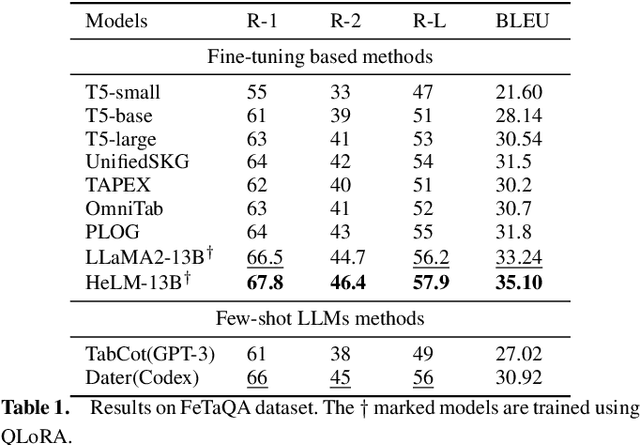
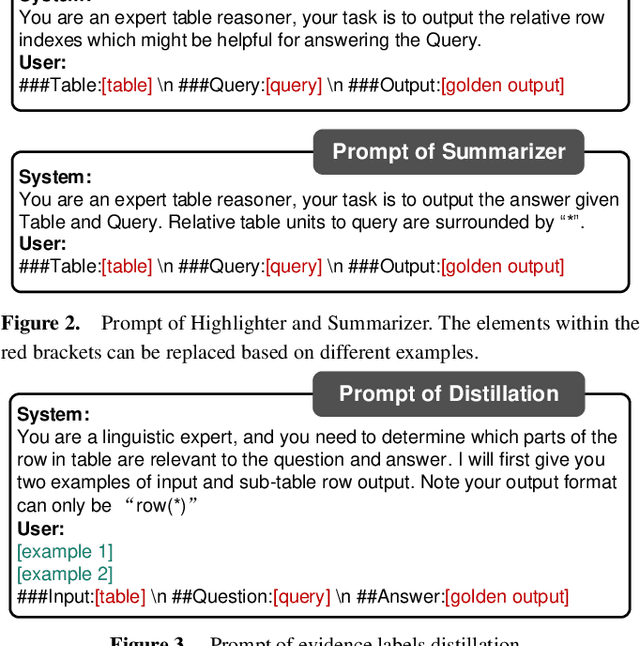
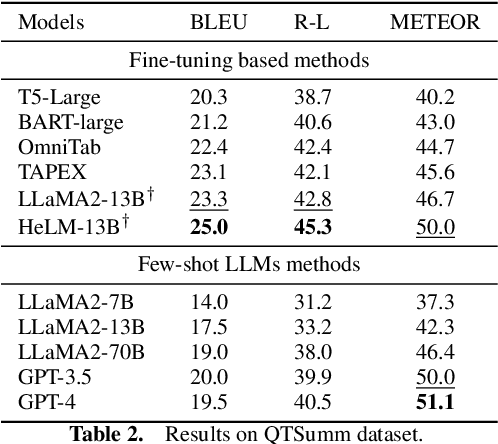
Abstract:Large models have demonstrated significant progress across various domains, particularly in tasks related to text generation. In the domain of Table to Text, many Large Language Model (LLM)-based methods currently resort to modifying prompts to invoke public APIs, incurring potential costs and information leaks. With the advent of open-source large models, fine-tuning LLMs has become feasible. In this study, we conducted parameter-efficient fine-tuning on the LLaMA2 model. Distinguishing itself from previous fine-tuning-based table-to-text methods, our approach involves injecting reasoning information into the input by emphasizing table-specific row data. Our model consists of two modules: 1) a table reasoner that identifies relevant row evidence, and 2) a table summarizer that generates sentences based on the highlighted table. To facilitate this, we propose a search strategy to construct reasoning labels for training the table reasoner. On both the FetaQA and QTSumm datasets, our approach achieved state-of-the-art results. Additionally, we observed that highlighting input tables significantly enhances the model's performance and provides valuable interpretability.
LatEval: An Interactive LLMs Evaluation Benchmark with Incomplete Information from Lateral Thinking Puzzles
Aug 21, 2023



Abstract:With the continuous evolution and refinement of LLMs, they are endowed with impressive logical reasoning or vertical thinking capabilities. But can they think out of the box? Do they possess proficient lateral thinking abilities? Following the setup of Lateral Thinking Puzzles, we propose a novel evaluation benchmark, LatEval, which assesses the model's lateral thinking within an interactive framework. In our benchmark, we challenge LLMs with 2 aspects: the quality of questions posed by the model and the model's capability to integrate information for problem-solving. We find that nearly all LLMs struggle with employing lateral thinking during interactions. For example, even the most advanced model, GPT-4, exhibits the advantage to some extent, yet still maintain a noticeable gap when compared to human. This evaluation benchmark provides LLMs with a highly challenging and distinctive task that is crucial to an effective AI assistant.
Diversity is Strength: Mastering Football Full Game with Interactive Reinforcement Learning of Multiple AIs
Jun 28, 2023
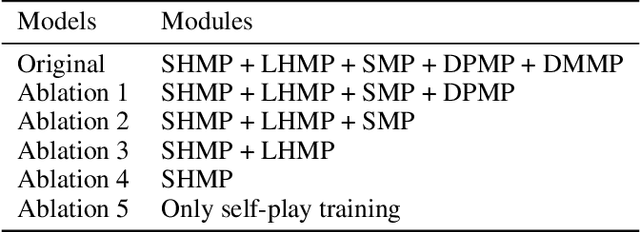
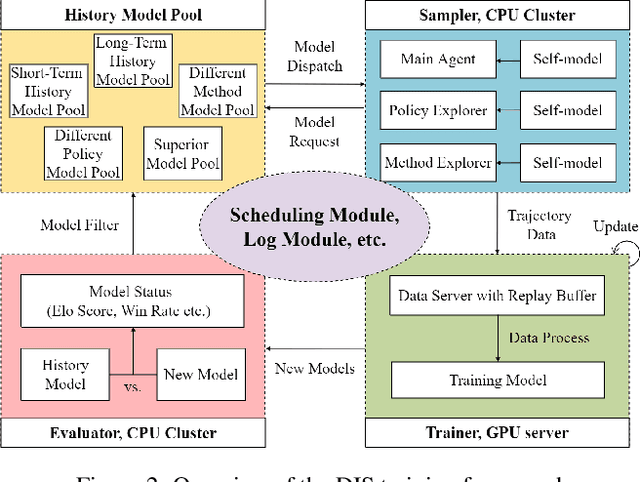
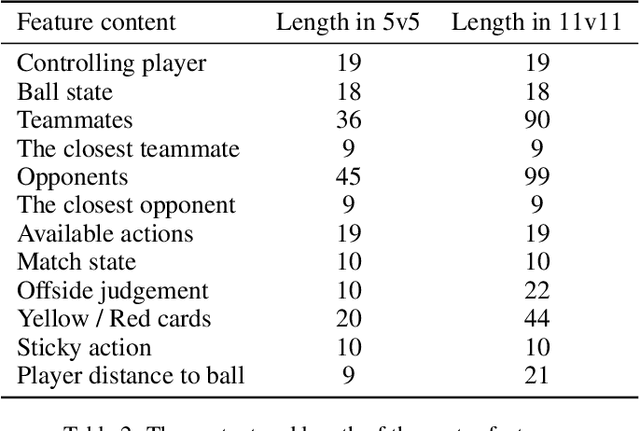
Abstract:Training AI with strong and rich strategies in multi-agent environments remains an important research topic in Deep Reinforcement Learning (DRL). The AI's strength is closely related to its diversity of strategies, and this relationship can guide us to train AI with both strong and rich strategies. To prove this point, we propose Diversity is Strength (DIS), a novel DRL training framework that can simultaneously train multiple kinds of AIs. These AIs are linked through an interconnected history model pool structure, which enhances their capabilities and strategy diversities. We also design a model evaluation and screening scheme to select the best models to enrich the model pool and obtain the final AI. The proposed training method provides diverse, generalizable, and strong AI strategies without using human data. We tested our method in an AI competition based on Google Research Football (GRF) and won the 5v5 and 11v11 tracks. The method enables a GRF AI to have a high level on both 5v5 and 11v11 tracks for the first time, which are under complex multi-agent environments. The behavior analysis shows that the trained AI has rich strategies, and the ablation experiments proved that the designed modules benefit the training process.
Mastering Asymmetrical Multiplayer Game with Multi-Agent Asymmetric-Evolution Reinforcement Learning
Apr 20, 2023Abstract:Asymmetrical multiplayer (AMP) game is a popular game genre which involves multiple types of agents competing or collaborating with each other in the game. It is difficult to train powerful agents that can defeat top human players in AMP games by typical self-play training method because of unbalancing characteristics in their asymmetrical environments. We propose asymmetric-evolution training (AET), a novel multi-agent reinforcement learning framework that can train multiple kinds of agents simultaneously in AMP game. We designed adaptive data adjustment (ADA) and environment randomization (ER) to optimize the AET process. We tested our method in a complex AMP game named Tom \& Jerry, and our AIs trained without using any human data can achieve a win rate of 98.5% against top human players over 65 matches. The ablation experiments indicated that the proposed modules are beneficial to the framework.
CLIPVG: Text-Guided Image Manipulation Using Differentiable Vector Graphics
Dec 05, 2022



Abstract:Considerable progress has recently been made in leveraging CLIP (Contrastive Language-Image Pre-Training) models for text-guided image manipulation. However, all existing works rely on additional generative models to ensure the quality of results, because CLIP alone cannot provide enough guidance information for fine-scale pixel-level changes. In this paper, we introduce CLIPVG, a text-guided image manipulation framework using differentiable vector graphics, which is also the first CLIP-based general image manipulation framework that does not require any additional generative models. We demonstrate that CLIPVG can not only achieve state-of-art performance in both semantic correctness and synthesis quality, but also is flexible enough to support various applications far beyond the capability of all existing methods.
 Add to Chrome
Add to Chrome Add to Firefox
Add to Firefox Add to Edge
Add to Edge